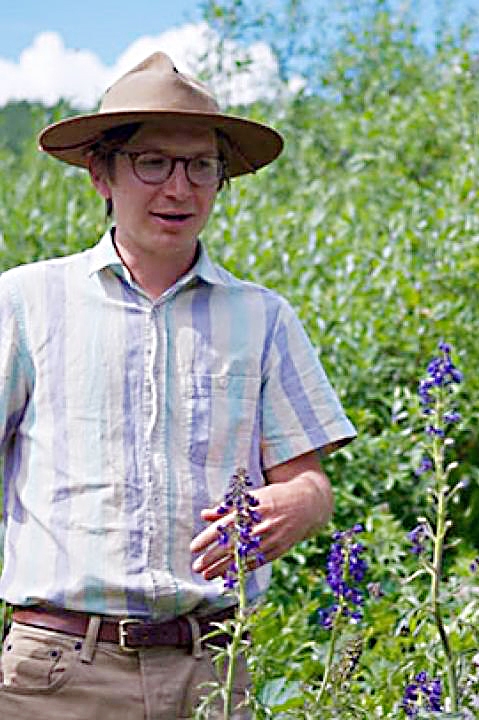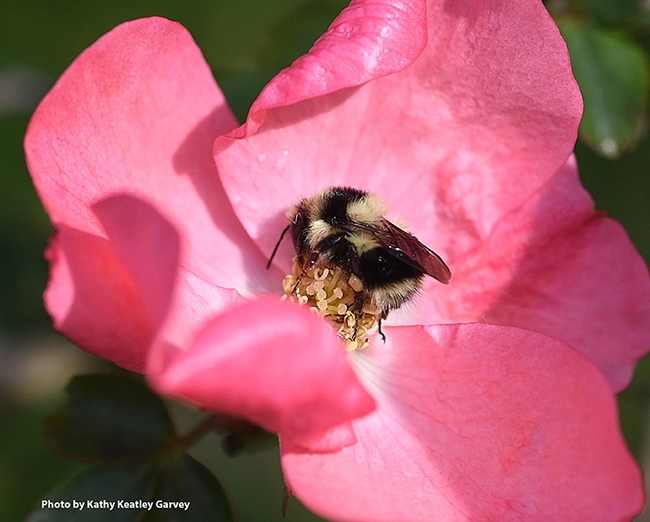
That's the title of conservation ecologist Paul CaraDonna's seminar that he'll present to the UC Davis Department of Entomology and Nematology from 4:10 to 5 p.m., Monday, Oct. 2 in 122 Briggs Hall, UC Davis campus. The seminar also will be on Zoom. The link: https://ucdavis.zoom.us/j/95882 849672
This is the department's opening seminar of the fall season. Host is pollination ecologist Neal Williams, professor, UC Davis Department of Entomology and Nematology, who will introduce CaraDonna.
CaraDonna serves as a research scientist at the Chicago Botanic Garden, a professor of instruction at Northwestern University, Illinois, and as a principal investigator at the Rocky Mountain Biological Laboratory, Gothic,Colo. (See Caradonna Lab website.)
"Plant-pollinator interactions are ubiquitous and play an important role in ecosystem functioning across the globe," he says in his abstract. "Critically, plants, pollinators, and their interactions face numerous threats in our changing world, including those related to climate change. However, our understanding of the consequences of these threats to plant-pollinator interactions has been hampered because we lack knowledge of the basic ecology of many of these organisms, and how their ecology responds to changing abiotic and biotic conditions. We will investigate these issues in this seminar."
CaraDonna, associate editor of the Journal of Animal Ecology since January 2021, grew up in the Boston area, holds a bachelor's degree in botany from Humboldt State University (2010) and a doctorate in ecology and evolutionary biology from the University of Arizona (2016). He accepted a position as GROW Research Fellow for the Center for Macroecology, Evolution and Climate, Department of Biology, University of Copenhagen in 2015. GROW is the National Science Foundation's Graduate Research Opportunities Worldwide.
CaraDonna joined the Chicago Botanic Garden in 2016. On his LinkedIn page, he says: "My research aims to understand the structure and function of ecological communities and species interactions. In doing so, I explore the interplay among ecological community context, environmental variation, and biological timing (phenology). I ask how these factors influence plant and animal populations, their interactions, and community-level patterns from a basic ecological perspective and under rapid climate change scenarios."
CaraDonna's research topics include bumble bees. He co-authored an article on the size of bumble bees: "Ecological Drivers and Consequences of Bumble Bee Body Size Variation," published Nov. 22, 2022 in the Journal of Environmental Entomology.
"Body size is arguably one of the most important traits influencing the physiology and ecology of animals," the authors wrote. "Shifts in animal body size have been observed in response to climate change, including in bumble bees (Bombus spp. [Hymenoptera: Apidae]). Bumble bee size shifts have occurred concurrently with the precipitous population declines of several species, which appear to be related, in part, to their size. Body size variation is central to the ecology of bumble bees, from their social organization to the pollination services they provide to plants. If bumble bee size is shifted or constrained, there may be consequences for the pollination services they provide and for our ability to predict their responses to global change. Yet, there are still many aspects of the breadth and role of bumble bee body size variation that require more study. To this end, we review the current evidence of the ecological drivers of size variation in bumble bees and the consequences of that variation on bumble bee fitness, foraging, and species interactions. In total we review: (1) the proximate determinants and physiological consequences of size variation in bumble bees; (2) the environmental drivers and ecological consequences of size variation; and (3) synthesize our understanding of size variation in predicting how bumble bees will respond to future changes in climate and land use. As global change intensifies, a better understanding of the factors influencing the size distributions of bumble bees, and the consequences of those distributions, will allow us to better predict future responses of these pollinators."
CaraDonna is a frequent presenter at Entomological Society of America (ESA) meetings. At the 2020 meeting, he spoke on "How Flexible Are Species' Roles Within Plant-Pollinator Networks? A Within-Season Temporal Perspective" and "Contrasting Responses of Bumble Bee Life Stages in Variation in Floral Resources and Climate." (See Google Scholar)
Seminar coordinator is Brian Johnson, associate professor, UC Davis Department of Enotmology and Nematology. For Zoom technical issues, he may be reached at brnjohnson@ucdavis.edu. The list of fall seminars is posted here.
Attached Images:
